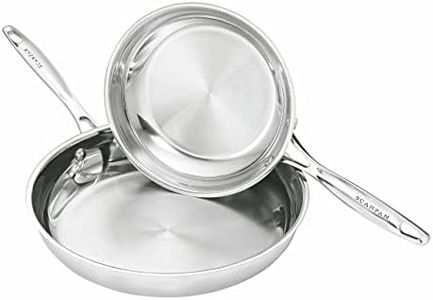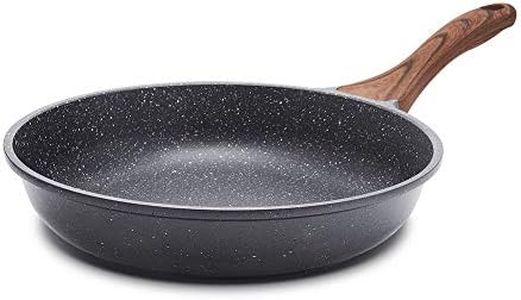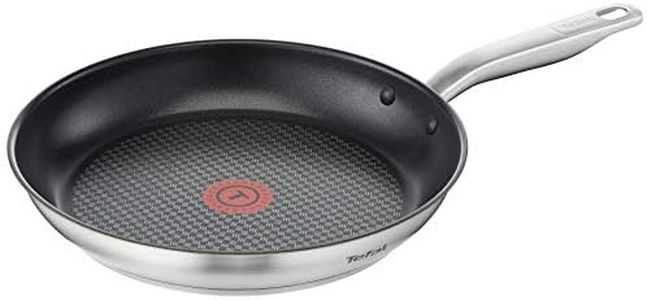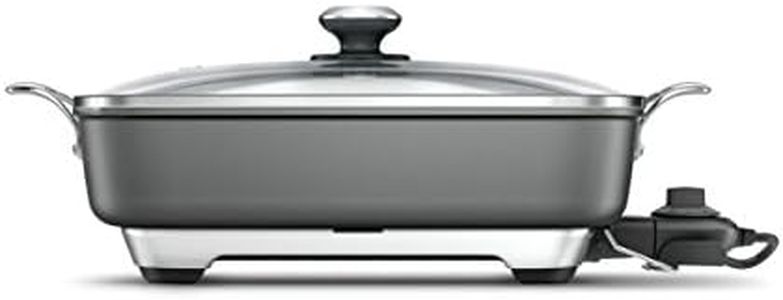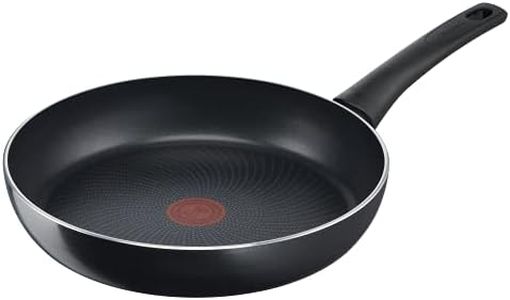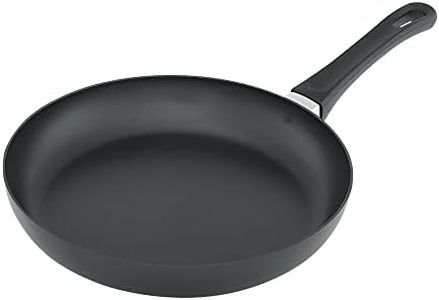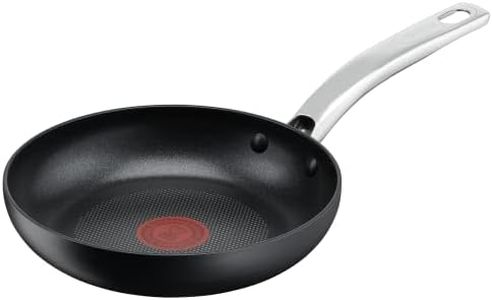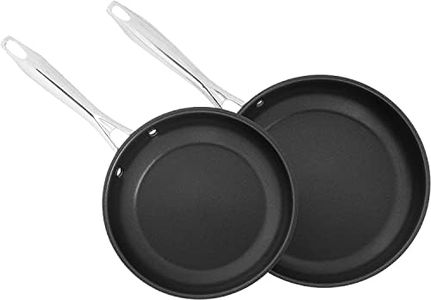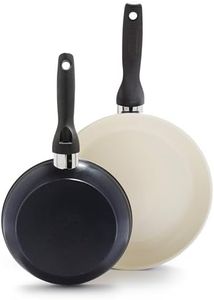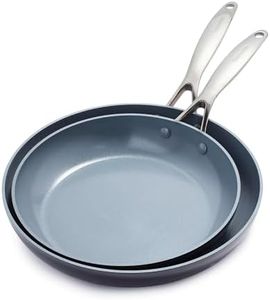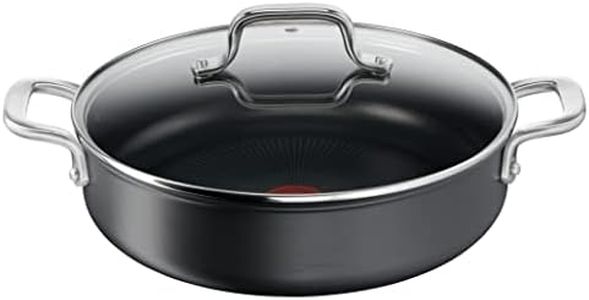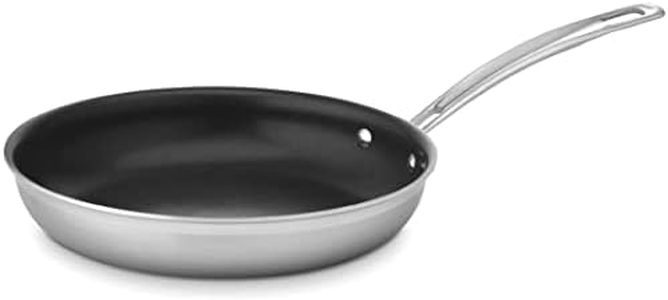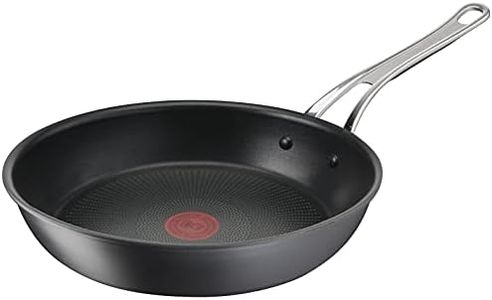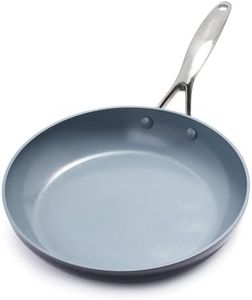We Use CookiesWe use cookies to enhance the security, performance,
functionality and for analytical and promotional activities. By continuing to browse this site you
are agreeing to our privacy policy
10 Best Non-Stick Pans
From leading brands and best sellers available on the web.By clicking on a link to a third party's website, log data is shared with that third party.
Buying Guide for the Best Non-Stick Pans
Choosing a non-stick pan can make cooking and cleaning much easier, especially if you often prepare foods like eggs, pancakes, or delicate fish. When shopping for a non-stick pan, focus on what and how you like to cook, how often you'll use the pan, and your preferences for care and maintenance. Understanding the main features and how they impact performance will help you choose a pan that fits seamlessly into your kitchen routine.Coating TypeThe coating on a non-stick pan is the layer that prevents food from sticking and allows for easy cleaning. There are different types such as traditional PTFE (often known as Teflon), ceramic, and newer non-teflon options. PTFE is usually slicker and more durable, while ceramic is valued for being free of certain chemicals. When navigating coating types, think about what matters most—maximum non-stick performance, chemical concerns, or environmental impact. If you're sensitive to chemicals or prefer eco-friendly products, ceramic or alternative coatings might be the best fit. For top-level non-stick convenience and durability, PTFE options generally perform best. Choose the type that matches your cooking comfort and care preferences.
Pan MaterialThe base material of a non-stick pan influences how heat is distributed and how heavy the pan feels. Common materials include aluminum, stainless steel, and sometimes hard-anodized aluminum. Aluminum pans tend to heat up quickly and are lightweight, good for everyday cooking. Hard-anodized aluminum is stronger and more scratch-resistant. Stainless steel bases are heavier and can offer more even heat but may be less responsive to temperature changes. Think about your strength, how evenly you want heat distributed, and whether you want a lighter or sturdier feeling pan. Lighter aluminum is great for frequent lifting, while heavier options work well for steadier, slower cooking.
Oven and Dishwasher SafetySome non-stick pans are safe to use in the oven or dishwasher, which adds convenience for finishing dishes in the oven or making cleanup easier. This is usually stated clearly on the packaging or in product details. Oven-safe pans can handle higher temperatures, good if you like to start dishes on the stove and finish them in the oven. Dishwasher safety is important if you want the option to toss the pan in with your regular dishes, though hand washing often extends the pan’s lifespan. Think about your cooking habits—if you regularly make oven-finished dishes or dislike hand washing, look for pans rated for those uses.
Handle Design and MaterialPan handles can be made of metal, silicone, or plastic, and may be riveted or screwed on. The design affects how comfortable and safe the pan is to use. Metal handles allow oven use but can get hot, while silicone or plastic stay cooler but can sometimes limit oven safety. Consider what feels secure in your hand, whether a cool-touch handle matters to you, and if you ever want to use the pan in the oven. Choose a handle that feels sturdy and suits how you like to cook and move your pans around.
Pan Size and ShapeNon-stick pans come in a variety of sizes and shapes, generally ranging from small (8 inches) to large (12 inches or more). The right size depends on how many people you cook for and the types of meals you prepare. Small pans are handy for single servings or eggs, while larger pans can handle family-size portions, stir-frying, or sautéing. As you assess your needs, think about your most common meal prep: a solo breakfast, family dinners, or specialty dishes. Pick a size that matches your typical cooking portions.
Compatibility with CooktopsSome non-stick pans work on all stoves, including induction, while others only work on gas or electric. The difference comes from the material of the pan’s base; induction cooking requires a magnetic-based pan. If you have an induction cooktop, check for compatibility before purchasing. If your stove is not induction, most pans will work, so you have a wider choice. Always choose a pan that matches your kitchen setup.
Durability and Care InstructionsNon-stick pans have varying lifespans based on their coating and how they're cared for. Some require only gentle utensils (such as wood or silicone), and gentle hand washing to preserve the coating, while others are marketed as more scratch-resistant. Look for care guidelines and think about your cooking style—if you tend to use metal tools or clean vigorously, seek out pans with reinforced coatings. If you are gentle and careful, traditional non-sticks can suffice. Matching your care habits to the pan will keep it working well for longer.
